Exploring the Growing Trend of Indoor Playgrounds
In recent years, the indoor playground industry has experienced significant growth. The growing popularity of indoor recreational facilities, including indoor playgrounds, can be attributed to various factors such as increasing urbanization, rising disposable income, and changing lifestyles. According to industry forecasts, the indoor playground market is expected to reach US$40,814 million by 2025, growing at a CAGR of 10.88% between 2020 and 2025.
Market analysis shows that ample growth opportunities exist in the indoor playground industry. The demand for indoor playgrounds is expected to increase as urban areas continue to expand and families seek safe and stimulating environments for their children.
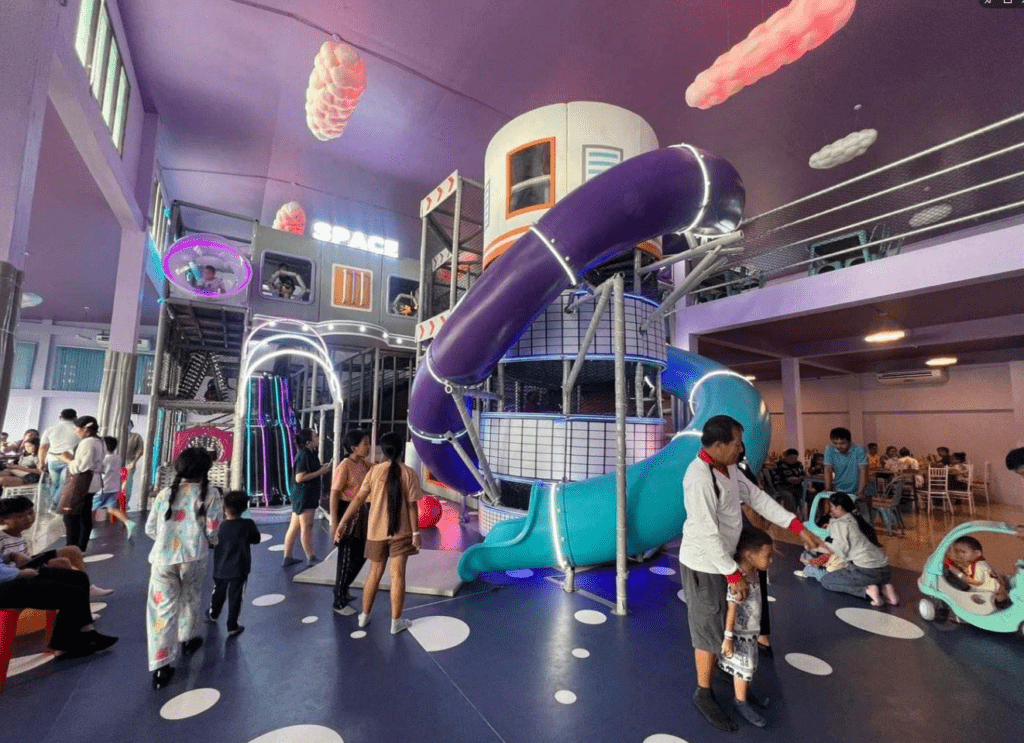
How Much Do Indoor Playgrounds Make?
The revenue generated by kids indoor playgrounds can vary greatly depending on various factors such as location, scale, target demographic, pricing strategy, additional services offered, and operational efficiency. While there’s no one-size-fits-all answer, Lebo Play can provide a general overview of the revenue potential based on industry averages and typical business models.
- Admission Fees: Kids indoor playgrounds often charge children an entrance fee to enter the indoor play area. Revenue generated from admission fees depends on factors such as the number of visitors, pricing structure (hourly, daily, monthly, annual, or per visit), and any discounts or promotions offered. On average, admission fees range from $5 to $20 per child.
- Party Bookings: Hosting birthday parties, special events, and group outings can be a great source of revenue for your indoor playgrounds. Party packages may include exclusive use of the party room, catering, decorations, and entertainment options. Depending on the package and the number of parties hosted per week, party booking revenue ranges from hundreds to thousands of dollars per event.
- Membership Programs: Offering a membership or season pass program can provide a steady stream of recurring revenue for your indoor children’s playground. Membership benefits may include unlimited access to the play area, discounts on additional services, and exclusive perks. Membership fees vary based on the duration of the membership and the level of benefits offered, ranging from monthly to annual memberships, with prices typically ranging from US$20 to US$50 per child per month.
- Sell food and drinks: Selling food at your indoor playground can greatly increase the profit of your indoor playground. Although you will have to invest more money and obtain some additional licenses to sell food at your establishment, food can be a great addition to your business. When guests are able to refuel and hydrate, they will stay longer, and you will gain another revenue stream for your business.
- Additional Services: Additional revenue streams may come from ancillary services such as arcade games, vending machines, merchandise sales (e.g., your branded clothing and toys), and rental services (e.g., strollers and lockers). The revenue potential of these ancillary services will depend on the popularity of these offerings and visitors’ purchasing behavior.
Overall, kids indoor playgrounds have the potential to generate substantial revenue, with successful businesses earning anywhere from $1k to $25k per month. In terms of revenue, the indoor playground industry earned a total revenue of $336 million in 2019.
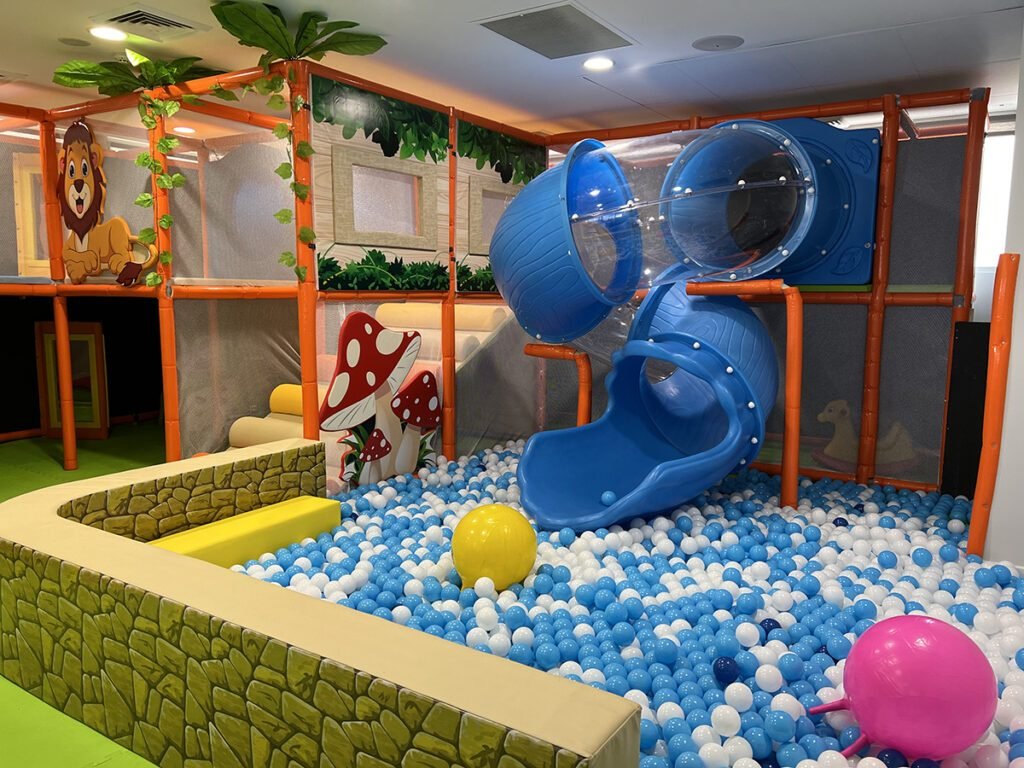
How to Open an Indoor Playground?
Step 1. Market Research
Market research is an important step in understanding the demand, competition, and potential success factors of starting a childrens indoor playground business. Following is a comprehensive guide on how to conduct market research for indoor playgrounds business:
1. Be clear about your goals:
Please list what you hope to gain from your market research, such as analyzing the demand for indoor playgrounds in your area, determining target demographics and customer preferences, and researching your competitors and their offerings.
Identify the specific information you need to gather in order to make an informed decision about starting and operating an indoor playground.
2. Identify your target market:
Define your target audience based on factors such as age groups (toddlers, children, teens), parents’s income levels, geographic location, and psychographics.
Consider conducting surveys or focus groups to gain insights into your target market’s preferences, needs, and behaviors.
3. Evaluate market demand:
Find out if there’s a demand for indoor playgrounds in your area by analyzing factors such as population density, number of households with young children, and existing entertainment options.
You can look up data on market trends, growth forecasts, and consumer spending patterns using online research tools, government databases, and industry reports.
4. Research your competitors:
Identify existing indoor playgrounds, family entertainment centers, and similar businesses in your area.
Conduct a competitive analysis to evaluate their offerings, pricing strategies, target demographics, strengths, and weaknesses.
Visit competitors’ facilities to evaluate the quality of their indoor playground equipment, amenities, cleanliness, and customer service.
5. Evaluate Site selection:
Research potential locations for your indoor playground, including visibility, accessibility, parking, and proximity to residential areas, schools, or shopping malls.
Analyze the demographics of the surrounding neighborhoods to ensure alignment with your target market.
6. Explore regulatory requirements:
Research the zoning regulations, building codes, and permitting requirements related to operating an indoor playground in your play area.
Check with local authorities, such as city planners or health departments, about the permitting process and any legal considerations.
7. Gather feedback:
Interact with potential customers and stakeholders to gather feedback on your indoor playground concept, business plan, and proposed offerings.
Conduct surveys, interviews, or focus groups to solicit input from parents, caregivers, and community members about their preferences, concerns, and suggestions.
8. Analyze findings and make informed decisions:
Use your research insights to refine your business plan, develop marketing strategies, and make informed decisions about indoor playground location, design, and operations.
9. Continuously monitor and adopt:
Stay up to date on market trends, consumer preferences, and competitive developments in the indoor playground industry.
Continuously monitor customer feedback, sales data, and operational performance to identify areas for improvement and adjust your business strategies accordingly.
By conducting thorough market research, you can gain insights into the demand for indoor playgrounds in your target area, understand your competition, and make informed decisions to make your business up for success.
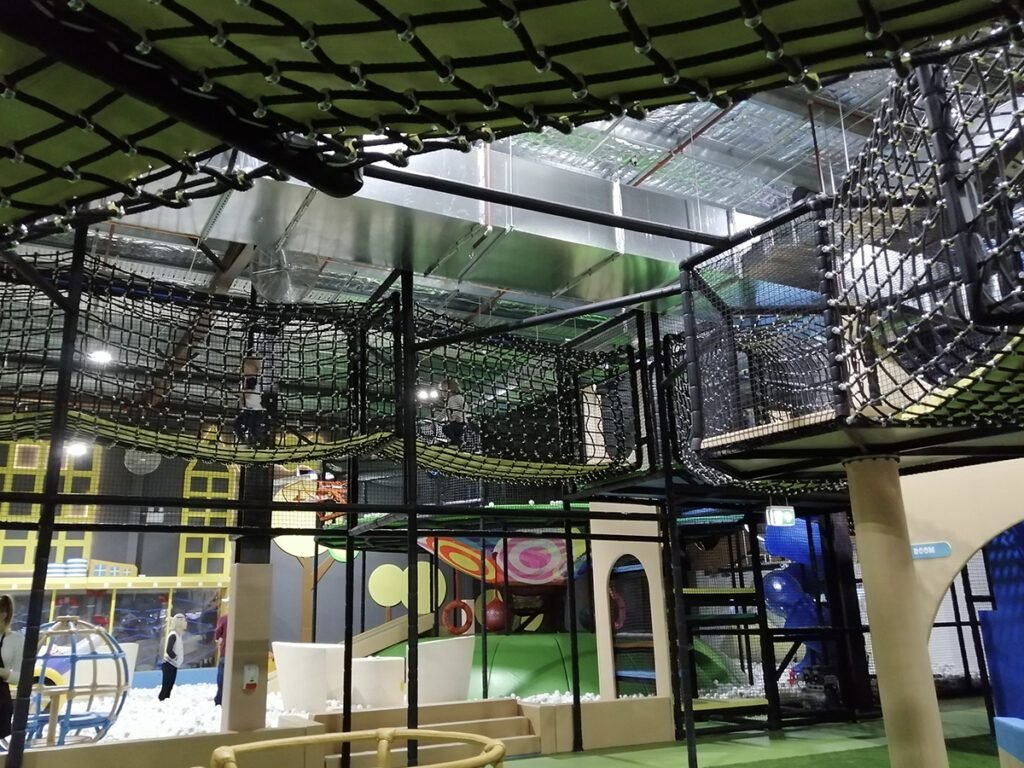
Step 2. Business Plan
Creating a detailed business plan is crucial for starting an indoor playground business. Here’s a step-by-step guide on how to write a business plan for your indoor children’s playground business:
1. Executive Summary
Please provide an overview of your indoor playground venture, detailing its mission, objectives, and future aspirations. Give a condensed version of essential aspects of the business strategy, such as the intended audience, offerings, competitive edge, and financial forecasts.
2. Business Description:
Describe the concept of your indoor playground, including the types, themes, and amenities you plan to offer indoor playground equipment. Explain the unique selling points that differentiate your indoor playground from competitors and appeal to your target market.
3. Market Analysis
Conduct market research to assess the demand for indoor playgrounds in your target area.
Analyze demographic data, market trends, competition, and consumer preferences to identify opportunities and potential challenges.
Define your target market and describe its characteristics, needs, and behaviors.
4. Organization and management
Outline the legal structure of your indoor playground business (e.g., sole proprietorship, partnership, LLC).
Please provide details about the management team, including their backgrounds, roles, responsibilities, and relevant experience.
Identify any key advisors or consultants who will support your business operations.
5. Products and Services
Specify the types of play equipment, attractions, and amenities offered at your indoor playground.
Describe any additional services, such as party hosting, concessions, or membership programs.
Highlight any unique features or themed areas that differentiate your indoor playground from competitors.
6. Marketing strategy
Provide a summary of your indoor play area business’s operational elements, such as its location, operating hours, staff, and customer service guidelines.
Describe the layout and appearance of your indoor play area facility, highlighting safety precautions, compliance with ADA regulations, and how you manage capacity.
Talk about how you acquire equipment, maintain it, and handle inventory.
Provide an overview of your health and safety protocols, cleanliness standards, and emergency response procedures.
7. Operational Plan
Provide an overview of your indoor playground business’s operational aspects, including location, hours of operation, staffing, and customer service policies.
Detail the layout and design of your indoor playground facility, including safety measures, ADA compliance, and capacity management.
Discuss equipment procurement, maintenance, and inventory management procedures.
Outline your policies and procedures for health and safety, cleanliness, and emergency response.
8. Financial Plan
Develop a detailed financial plan that includes start-up costs, revenue projections, and expenses.
Estimate the initial investment required to start your indoor playground, including equipment purchases, facility rental improvements, marketing expenses, and working capital.
Forecast your revenue based on factors such as admission fees, party bookings, memberships, and ancillary services.
Create a comprehensive budget that outlines monthly operating expenses, including rent, utilities, wages, insurance, and maintenance.
Prepare a cash flow statement, balance sheet, and income statement to track your financial performance over time.
9. Risk Management
Identify potential risks and challenges that may impact your indoor playground business, such as competition, economic downturns, regulatory changes, or safety concerns.
Develop strategies to mitigate risks and contingency plans to address unforeseen circumstances.
Ensure compliance with relevant laws, regulations, and industry standards to minimize legal and operational risks.
By following these steps, you can create a comprehensive business plan that outlines your vision, strategies, and financial projections for launching and operating a successful indoor playground business. Be sure to revisit and update your business plan regularly as your business evolves and grows.
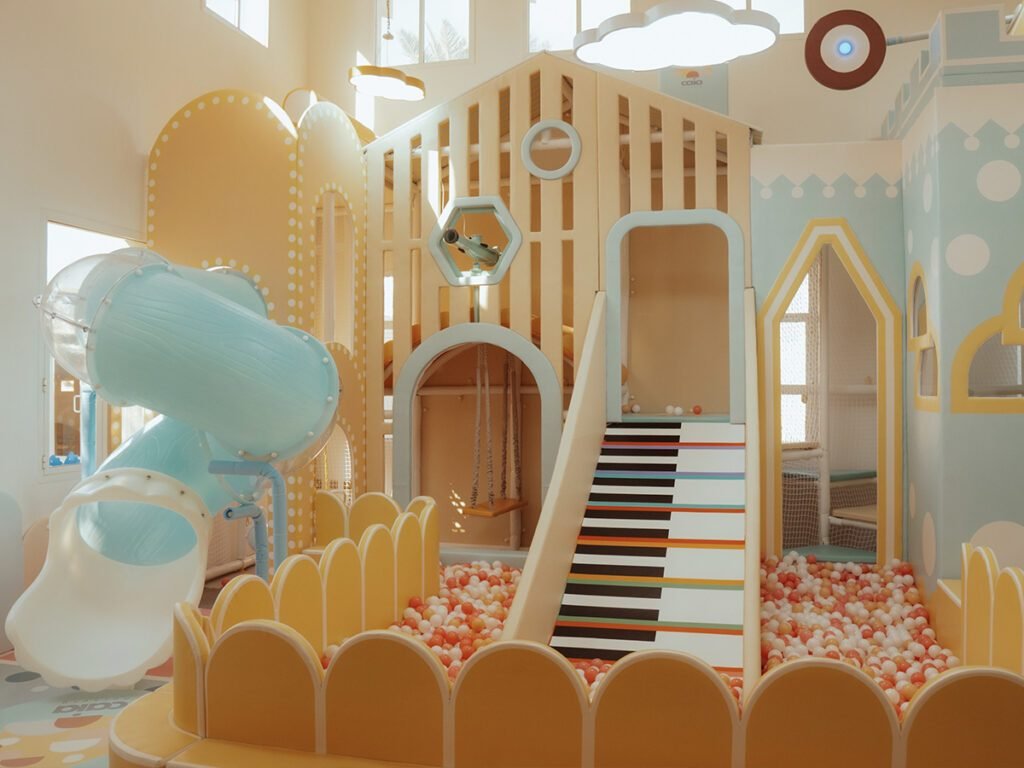
Step 3. Location Selection
To maximize the potential audience for your indoor playground, select locations with a high volume of foot traffic, accessible transportation options, and a significant concentration of children. Examples of suitable locations include family entertainment centers, shopping malls, childcare facilities, restaurants, community centers, churches, fitness centers, and other similar venues. And, of course, consider the cost of renting or leasing the space when evaluating potential locations.
Step 4. Bespoke Design Your Indoor Playground
Once you have confirmed your venue, send your site dimensions to our designer, and we will plan the appropriate interior layout based on your actual site size. The design process involves selecting the overall style, theme, and attractions for the indoor playground equipment, as well as choosing the materials and equipment placement. Our professional designer will work closely with you to ensure that the final design meets your specific needs and preferences.
Step 5. Legal and Regulatory Compliance
Before you install indoor playground equipment, you need to know what business licenses you need under your state’s laws. Additionally, you’ll need to find out if your state requires any licenses for child care.
If you don’t have your own business, you will need to register your business with the indoor children’s playground name and obtain a tax identification number. You’ll also need liability insurance and any other permits that your state laws may require.
Step 6. Indoor Playground Equipment Installation
Once you’ve decided to start your indoor playground business, it’s crucial to find a reliable supplier. We can provide you with detailed installation drawings, reference photos, and videos if you can install them by yourselves, or we can arrange for installation engineers to come to your venue to install them. The latter option may offer your indoor playground business a significant level of convenience.
If you’re feeling overwhelmed by the thought of building an indoor playground, fear not! Lebo Play is here to help. Whether you’re unsure of where to start or need guidance throughout the process, we offer one-stop services from market research, cost and profit forecasting, site selection, free custom design, manufacturing, transportation, and installation. Let us help you bring your vision to life!
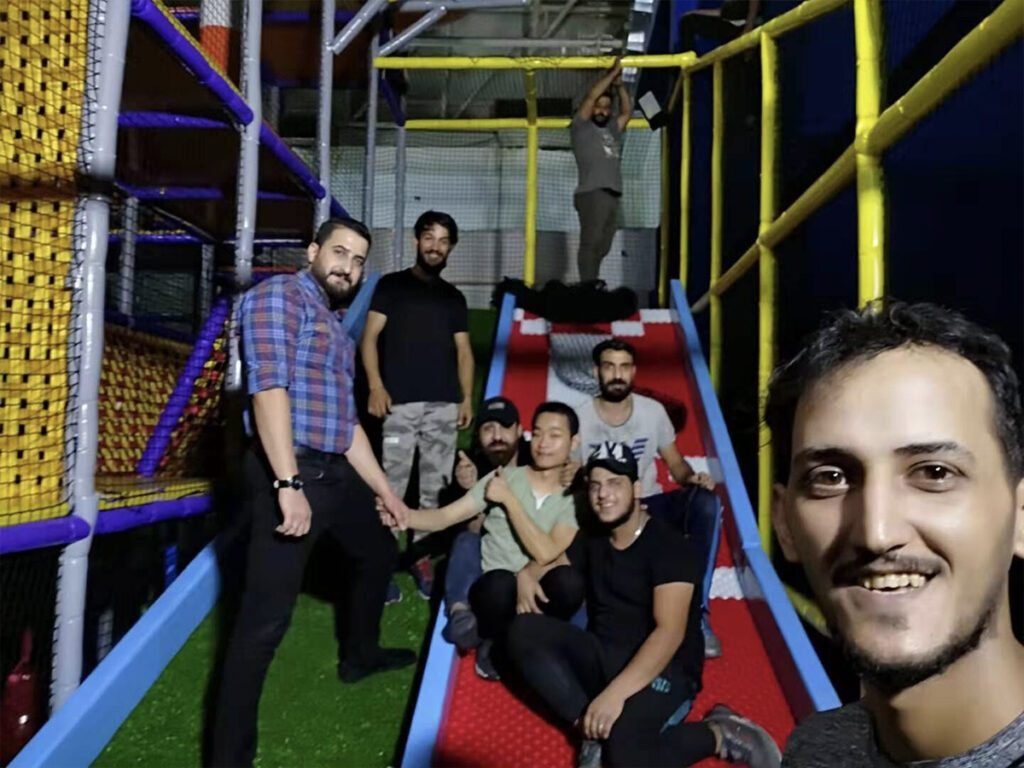
Step 7. Marketing and Promotion
At the core of every business are its customers, who are essential for its success. It is important to attract new customers and encourage repeat business. Below are some tactics we have observed being utilized to enhance foot traffic to your indoor playground.
1. Build A Strong Brand Image
2. Create a professional website for your indoor playground equipment that highlights its offerings, amenities, pricing, and upcoming events. Keep the website current with indoor playground activities and special offers, and implement an easy-to-use online ticketing system.
3. Create social media accounts to showcase the excitement of your indoor playgrounds. Share a mix of engaging content, such as daily play clips, behind-the-scenes looks at cleaning and maintenance, and reminders of upcoming promotions to keep your audience interested and informed.
4. Online advertising marketing
5. Establish collaborations with local businesses, schools, daycare centers, pediatricians, and community centers to boost awareness of your indoor play area.
6. Collect and display customer reviews
Encourage satisfied customers to leave positive reviews and testimonials on your website, social media pages, and review platforms such as Google My Business, Yelp, and TripAdvisor.
Step 8. Staffing and Training
- Hiring qualified staff members, including managers, attendants, and maintenance personnel.
- Providing training in customer service, safety procedures, and emergency protocols
- Creating employee schedules and conducting performance evaluations
Step 9. Grand Opening and Operations
Invite families to come and play during the grand opening. Offer special deals such as discounts on party bookings or complimentary samples on the day of the grand opening.
Step 10. Ongoing Maintenance for Your Playground Equipment
Using the highest quality product materials ensures your product will last as long as possible. Lebo Play only sells safe, durable, and well-designed playgrounds to our customers by using only the finest materials and following strict manufacturing standards.
By regularly inspecting and maintaining your play structures, you can guarantee your customers’ safety and extend the lifespan of your playground equipment. This proactive approach also helps avoid unnecessary turnaround and lost revenue, as you won’t have to close your park or certain areas for repairs temporarily.
Contact Lebo Play to Start Your Project
After reading this ultimate manual, you should now have an idea of how to initiate your indoor playground business strategy. Steps involve conducting market analysis, drafting a formal business plan, locating a suitable site, designing a unique layout, procuring equipment, setting up operations, hiring personnel, and promoting the indoor playground.
Still looking for a professional playground supplier? Contact us and let us provide you with professional one-on-one service to turn your indoor park dream into reality.

